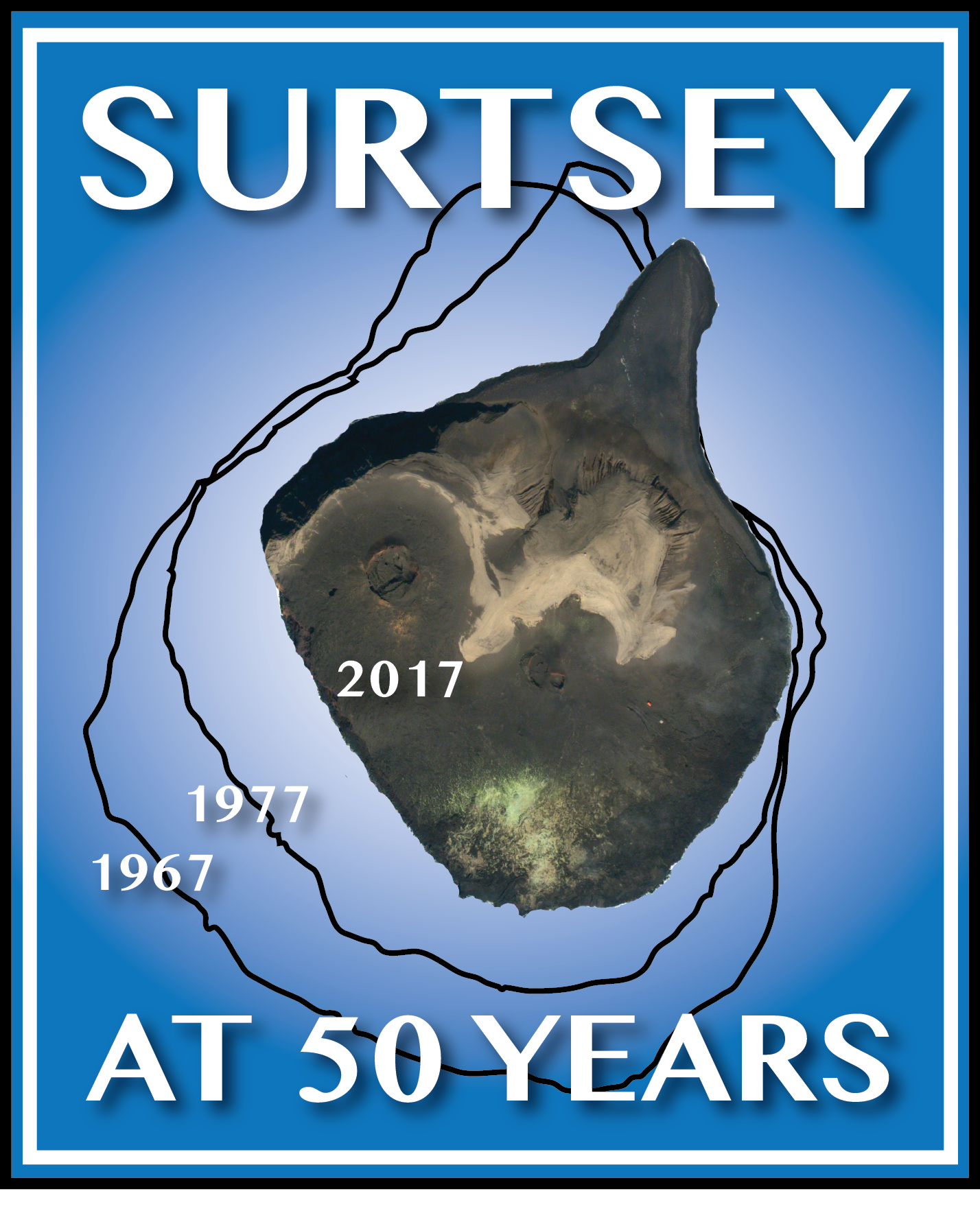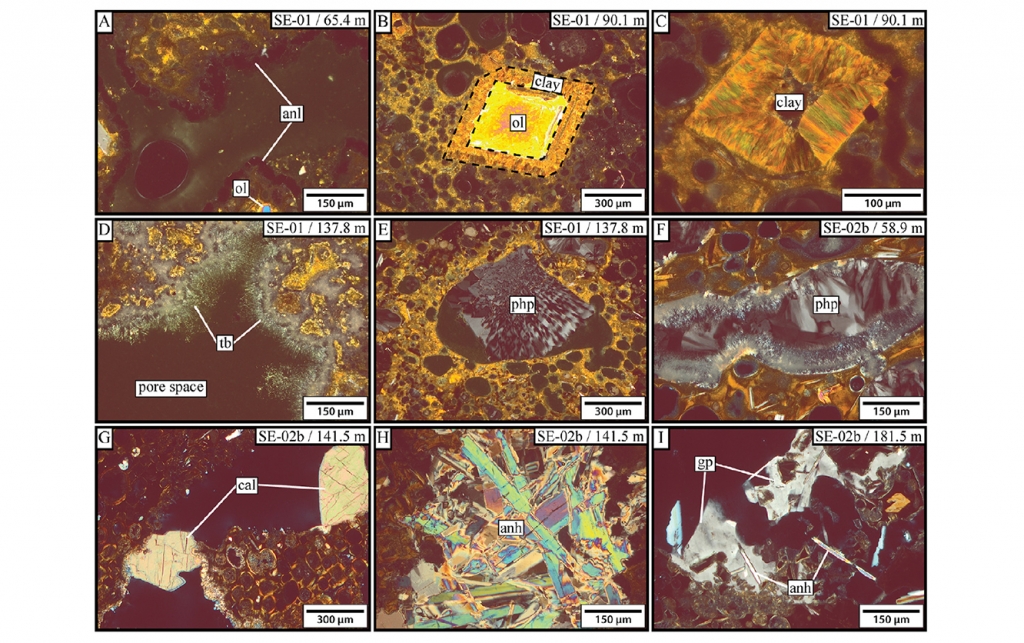A comparative petrographic study of samples from drill cores recovered in 1979 and 2017 reveals time-lapse alteration that is characterized by the presence of mineral contents, alteration rates and alteration style with depth in the volcano. Journal of Volcanological and Geothermal Research
Three different types of palagonitized glass are recognized in samples from the 1979 and 2017 Surtsey drill cores. A) Type I, or gel-palagonite, is mainly isotropic and shows little to no birefringence. B) Type II, showing bright and high intensity interference colors reminiscent of clay minerals as well as a weakly granular to fibrous texture. C) Type III, displaying less intense interference colors, pronounced fibrous texture and a slightly opaque, mottled appearance
These are the members of the SUSTAIN team that contributed to this article:
Simon Prause 1 (corresponding author), Tobias Björn Weisenberger1, Piergiulio Cappelletti2, Carla Grimaldi2, Concetta Rispoli2, Kristján Jónasson3, Marie D. Jackson4, Magnús Tumi Gudmundsson5
1 Iceland GeoSurvey (ÍSOR), Reykjavík, Iceland
2 Dipartimento di Scienze della Terra, dell’Ambiente e delle Risorse (DiSTAR), Università degli Studi di Napoli Federico II, Naples, Italy
3 Icelandic Institute of Natural History (IINH), Garðabær, Iceland
4 Department of Geology and Geophysics, University of Utah, Salt Lake City, USA
5 Nordvulk, Institute of Earth Sciences, University of Iceland, Reykjavík, Iceland

